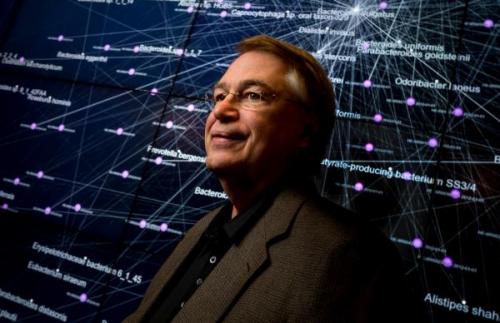
CSE Professor Larry Smarr is one of five faculty from the University of California San Diego awarded the distinction of fellow by the American Association for the Advancement of Science (AAAS). Smarr, who is also director of the California Institute for Telecommunications and Information Technology (Calit2), is among 391 members worldwide elevated in 2016 to be fellows for “their efforts toward advancing science applications that are deemed scientifically or socially distinguished.”

The new fellows will be honored on February 18, 2017, at the AAAS Annual Meeting in Boston.
In addition to Smarr, who is also the Harry E. Gruber professor of computer science and engineering in UC San Diego’s Jacobs School of Engineering, the other four new AAAS fellows from UC San Diego include economist Richard Carson, hydrologist Konstantine Georgakakos, bioengineer David Gough, and oceanographer Lynne Talley.
In naming Smarr a fellow, AAAS cited his track record of “leadership in scientific computing, high-performance computing, and cyberinfrastructure.” He is widely recognized for having driven major developments in information infrastructure, including the Internet, Web, scientific visualization, virtual reality, and global telepresence. Since the creation of Calit2 in 2000, Smarr has led a series of major projects funded by the National Science Foundation, including the influential $13.5 million OptIPuter project, and he also led the Moore Foundation-funded, $24.5 million CAMERA project that developed an infrastructure for marine microbial ecology research and analysis.

[Photo by Grant Delin]
Prior to joining the UC San Diego faculty, Smarr spent 20 years as a professor of physics and astronomy at the University of Illinois at Urbana-Champaign, where he was also the founding director of the National Center for Supercomputing Applications (NCSA). Before that, he was lead author on the first proposal asking NSF to invest in U.S. supercomputing centers to serve university researchers. The supercomputing proposal grew out of Smarr’s wide-ranging research, which required massive-scale computer processing to study the dynamics of radio jets, accretion disks orbiting black holes, supernovae, neutron star collisions, and gravitational waves, including modeling the head-on collision of two black holes (the subject of his doctoral dissertation). Smarr earned his Ph.D. in physics from the University of Texas at Austin in 1975.
A fellow of the American Physical Society since 1991 and the American Academy of Arts and Sciences since 1994, Smarr was elected a member of the National Academy of Engineering in 1995. In 2006 the IEEE Computer Society gave him its Tsutomo Kanai Award for lifetime achievements in distributed computing systems. That same year, Smarr also received the ESRI Lifetime Achievement Award.
In 2014 Smarr was honored with the congressionally-supported Golden Goose Award for how his work at the University of Illinois at Urbana-Champaign on calculating black hole collisions led him to champion a federal commitment to dramatically enhance U.S. computing power—which in turn led to the development of NCSA Mosaic, the precursor to today's ubiquitous web browsers.

